Flower Groupings: Plants For Mass Planting In The Garden


Mass planting is essentially a method of filling in garden or landscape areas with flower groupings of one or more kinds of plants. This is often done to reduce maintenance by minimizing weed growth or to create drama by drawing attention to the area. Staggering or grouping plants together as opposed to lining them in rows is usually much more appealing. Mass planting is a great choice for adding quick color to empty areas too.
Mass Planting Ideas & How Tos
As with any gardening endeavor, mass planting requires planning. First, you'll need to figure out the size of your planting area in square feet (or square meters) by multiplying the length by its width. Then, depending on how much spacing is necessary for your desired plantings, you should be able to estimate the number of plants you'll need for the project. Prior to planting anything, it's usually helpful to amend the soil. You'll also want to place each plant in their spaces beforehand to get a general idea of how it will look. Once you find a pattern or look that suits your tastes and desired effect, stick them in the ground and water them well. Don't forget to allow adequate spacing between plants to avoid issues with overcrowding later. To keep weeds down until the area fills completely, lay down moistened newspaper around plants and within empty areas and then top with mulch. You can also choose to add fast-growing filler plants.
Plants for Mass Planting
Nearly any plant can be used for mass planting schemes. Anything from small shrubs and ornamental grasses to mass-planting annuals and perennials will work well. For example, a sunny circular bed can be easily mass-planted with groupings of sun-loving perennial plants like:
Mass planting annuals also make good choices and may include:
In addition, you could opt for a mass planting of foliage plant groupings instead, using plants such as small shrubs, ornamental grasses, hostas, ferns, coleus, etc. Begin in the center and work your way outward, spacing as required. For shadier areas, choose lighter-colored flowers or variegated foliage.
Gardening tips, videos, info and more delivered right to your inbox!
Sign up for the Gardening Know How newsletter today and receive a free download of our most popular eBook "How to Grow Delicious Tomatoes."

Nikki Tilley has been gardening for nearly three decades. The former Senior Editor and Archivist of Gardening Know How, Nikki has also authored six gardening books.
-
 Grow a Bathroom Oasis: 8 Best Bathroom Plants With No Light or Low Light
Grow a Bathroom Oasis: 8 Best Bathroom Plants With No Light or Low LightSome apartment dwellers grow the best bathroom plants with no light or low light. Read how one of our favorite plant lovers does it in the big city.
By Teo Spengler
-
 "My Worst Mistake" – Gardeners Share 10 Hard-Learned Lessons
"My Worst Mistake" – Gardeners Share 10 Hard-Learned LessonsGardeners never stop learning, and sometimes our mistakes are the best teachers. But why not save time and heartache by learning from other gardeners' failures?
By Melanie Griffiths
-
 20 Hard-to-Find Spring Flowers & Plants That Look Amazing All Season
20 Hard-to-Find Spring Flowers & Plants That Look Amazing All SeasonIt’s finally beginning to look like spring! If you’re eager to find some unique, hard-to-find varietals to satisfy your spring fever, look here first.
By Caroline Bloomfield
-
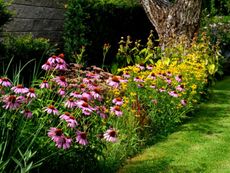 How Wildflower Strips Help Attract Pollinators To Your Yard
How Wildflower Strips Help Attract Pollinators To Your YardIf you have a small garden spot or strip available, fill it with wildflowers for our hungry pollinators. Click to learn more.
By Tonya Barnett
-
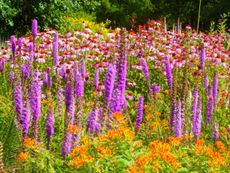 10 Knockout Native Flowers For A Punch Of Color
10 Knockout Native Flowers For A Punch Of ColorGrowing native is the way to go. See our list of ten native wildflowers that will knock you out with color.
By Amy Grant
-
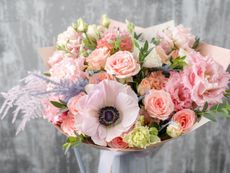 Pretty Plants For A Pastel Flower Bouquet
Pretty Plants For A Pastel Flower BouquetRoses aren’t the only romantic flower. Some romantic pastel flowers can fill in beautifully.
By Tonya Barnett
-
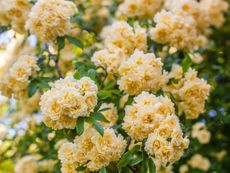 Soft Yellow Plants For A Sunny Pastel Garden
Soft Yellow Plants For A Sunny Pastel GardenClick here for ideas on some pale yellow flower varieties for pastel garden designs.
By Tonya Barnett
-
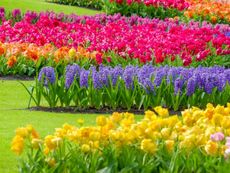 Most Common Flower Color In The World
Most Common Flower Color In The WorldWhat are the most common and least common flower colors in the world? Click here to find out.
By Mary Ellen Ellis
-
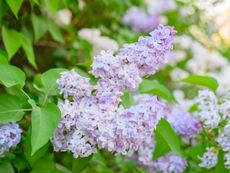 Pastel Plants For A Lovely, Light Purple Flower Garden
Pastel Plants For A Lovely, Light Purple Flower GardenClick here for ideas on some light purple plants for a pretty, pastel garden display.
By Tonya Barnett
-
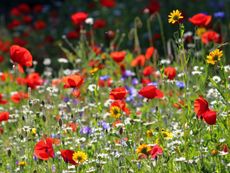 Plant Wildflower Seeds In Fall for A Stunning Spring Display
Plant Wildflower Seeds In Fall for A Stunning Spring DisplayCan you plant wildflower seeds in fall? What makes fall the best time to sow wildflower seeds? Click here for more.
By Tonya Barnett